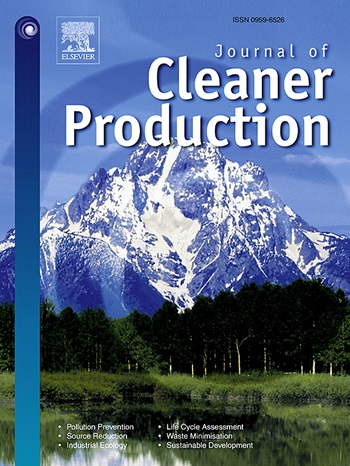微波清洁制氢:实验研究与比较评价
IF 9.7
1区 环境科学与生态学
Q1 ENGINEERING, ENVIRONMENTAL
引用次数: 0
摘要
联合国的可持续发展目标需要更清洁的能源解决方案和无碳燃料。在这方面,氢似乎是一种独特的候选者,以更清洁的方式生产氢是至关重要的,这是本文的主要焦点。本研究的重点是微波驱动水解离清洁制氢的实验研究,特别是探索各种钨基电极材料和蒸汽入口条件对制氢的影响。评估分为两个主要部分,评估水解离水平和整个系统的产氢量。主要观察结果包括所有电极材料的蒸汽入口温度和氢气产量之间的正相关关系,镧化钨表现出优越的性能。当只考虑水解离时,镧系钨电极表现出最有利的能量消耗,显示出产氢所需的最低能量。结合整体能源和火用效率,镧化钨成为表现最好的材料,其次是碳化钨,因为它们具有卓越的电弧稳定性。当蒸汽入口温度从104°C到120°C变化时,每千克氢的能量需求从51.98 kWh/kg到56.66 kWh/kg不等。在120°C蒸汽入口温度下,镧系钨电极的能量效率和火用效率分别为64.1%和62.3%。当考虑所有能量输入(蒸汽产生、预热、冷凝器泵和微波发生器)时,总能量和火用效率分别为35.1%和34.2%。生产1公斤氢气所需的能量为94.87千瓦时/公斤。因此,镧化钨电极表现优异,为推进微波制氢技术提供了有价值的意义。本文章由计算机程序翻译,如有差异,请以英文原文为准。


Cleaner hydrogen production by microwaves: Experimental investigation and comparative assessment
Sustainable development goals of the United Nations require cleaner energy solutions and carbon-free fuels. Hydrogen, in this regard, appears to be a unique candidate for all, and its production in a cleaner manner is critically important, which is the prime focus in the present paper. This study focuses on the newly designed experimental investigations into microwave-driven water dissociation for cleaner hydrogen production, specifically exploring the effect of various tungsten-based electrode materials and steam inlet conditions on hydrogen production. The evaluation is conducted in two main sections, assessing hydrogen production at the water dissociation level and the overall system. Some of the key observations include a positive correlation between steam inlet temperature and hydrogen production for all electrode materials, with lanthanated tungsten demonstrating superior performance. When only the water dissociation is considered, lanthanated tungsten electrodes exhibit the most favorable energy consumption, showcasing the minimum energy requirement for hydrogen production. Incorporating the overall energy and exergy efficiencies, the lanthanated tungsten emerges as the top performer, followed by ceriated tungsten, attributed to their superior arc stability. The energy requirement per kg of hydrogen varies from 51.98 kWh/kg to 56.66 kWh/kg for varying steam inlet temperatures from 104 °C to 120 °C. The highest energy and exergy efficiencies are recorded to be 64.1 % and 62.3 %, respectively, for lanthanated tungsten electrodes at 120 °C steam inlet temperature. When all energy inputs (steam generation, preheating, condenser pump, and microwave generator) are considered, the overall energy and exergy efficiencies are found to be 35.1 % and 34.2 %, respectively. The energy needed for 1 kg of hydrogen production is recorded to be 94.87 kWh/kg. Consequently, the lanthanated tungsten electrode stands out as a superior performer, offering valuable implications for advancing microwave hydrogen production technologies.
求助全文
通过发布文献求助,成功后即可免费获取论文全文。
去求助
来源期刊

Journal of Cleaner Production
环境科学-工程:环境
CiteScore
20.40
自引率
9.00%
发文量
4720
审稿时长
111 days
期刊介绍:
The Journal of Cleaner Production is an international, transdisciplinary journal that addresses and discusses theoretical and practical Cleaner Production, Environmental, and Sustainability issues. It aims to help societies become more sustainable by focusing on the concept of 'Cleaner Production', which aims at preventing waste production and increasing efficiencies in energy, water, resources, and human capital use. The journal serves as a platform for corporations, governments, education institutions, regions, and societies to engage in discussions and research related to Cleaner Production, environmental, and sustainability practices.
 求助内容:
求助内容: 应助结果提醒方式:
应助结果提醒方式:


